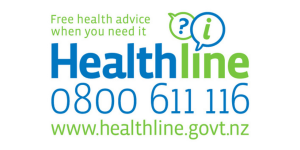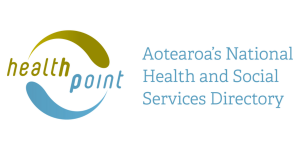Wishing everyone happy holidays and a joyful New Year from the Healthify team. Don't forget to Slip, Slop, Slap and Wrap!
Breast pain
Key points about breast pain
- Breast pain (also known as mastalgia) is the sensation of pain or tenderness felt in or around your breast.
- It's common and isn't usually a sign of breast cancer.
- Pain can by cyclical (monthly with your menstrual cycle) or non-cyclical.
- Breast pain can be treated with self-care measures such as wearing a better fitting bra.
- Treatment for non-cyclical breast pain depends on the cause.
- Men can get breast pain too.

If you have any of the following symptoms (with or without breast pain) contact your healthcare provider immediately:
- High fever or temperature.
- Red, hot or swollen breast.
- Hard lump in your breast.
- Nipple discharge with or without blood.
- Change in shape of 1 or both breasts.
- Persistent nipple eczema or ulceration.
- Nipple retraction (your nipple has sunk into your breast) that's been present for less than 3 months.
- Rash around your nipple.
- Ulceration or dimpled skin (looks like orange peel) on or around your breast.
You should also see your healthcare provider if you have breast pain that’s not improving or if you have a family history of breast cancer. They can also arrange for breast screening if you are eligible for this and are not up-to-date with your screening.
Your breast pain may be:
- cyclical (comes every month and is related to your period) or non-cyclical
- local (in one spot) or diffuse (affecting a wider area of your breast)
- in 1 or both breasts
- mild to severe
- with itch or inflammation
- related to activity (especially repetitive activity) or trauma.
It may be helpful to fill in a breast pain calendar(external link) to record the pattern and duration of your pain, eg, to see if it’s related to your period or not.
Breast pain on its own is rarely caused by breast cancer. The causes of breast pain depend on whether it is cyclical or non-cyclical.
Cyclical breast pain
Cyclical breast pain means the pain comes every month. It often starts 1 to 3 days before your period, gets worse and then goes away when your period ends. It's most common in women between 30 and 50 years of age.
Cyclical pain is due to changes in the levels of hormones such as oestrogen and progesterone during your menstrual cycle. The pain usually affects the upper outer area of both breasts and can sometimes spread to your armpit. It can range from a dull heavy ache to a burning sensation. Your breasts may feel swollen and lumpy.
Non-cyclical breast pain
Non-cyclical breast pain is not linked to your period. It can stay constant or come and go. The pain may affect 1 or both breasts. If you're over the age of 40 you're more likely to experience this.
Common causes include:
- breast infection or inflammation (mastitis) or breast abscess
- pregnancy
- medicines such as the combined oral contraceptive pill, other hormonal contraceptives, antidepressants or antipsychotics
- breast cysts or lumps
- menopause or menopausal hormone therapy
- large breasts which can cause ligaments to stretch causing pain.
Injuries, sprains or conditions affecting your chest wall, ribs, neck, shoulder or back can be felt as breast pain. This is called referred pain.
Less common causes of non-cyclical breast pain include post-herpetic pain (after shingles) angina and gastro-oesophageal reflux and gallstones.
Sometimes you can get breast pain with no obvious cause. See your healthcare provider if you have non-cyclical breast pain that hasn't gone away after 1 to 2 weeks.
Breast pain can occur in boys and men. It’s usually related to increased breast tissue (known as gynaecomastia) due to hormone changes at puberty or with ageing. This usually gets better without treatment. Gynaecomastia can also be caused by medicines (eg, some diuretics and heart medicines) and health conditions that affect hormones. Breast discomfort caused by gynaecomastia usually settles after 3 to 6 months.
Breast pain in males may also be caused by musculoskeletal conditions or other non-breast (extramammary) conditions. If you’re a man with breast pain, see your healthcare provider. About 1% of breast cancer occurs in men.
Transgender women may have breast pain caused by hormone therapy.
Transgender men may have breast pain in breast tissue left behind after gender-affirming surgery (mastectomy) or from breast binders that are too small or tight.
Your healthcare provider will ask you questions related to your breast pain, including whether you have any other symptoms such as breast lumps or changes. They’ll also ask about any history of breast disease or surgeries.
Your healthcare provider will examine your breasts and may arrange some blood tests or imaging, eg, an ultrasound scan or mammogram, depending on their examination findings and what they think is causing your breast pain. Most people with breast pain and normal breast examination findings don’t need to have any imaging investigations.
Here are some self-care measures that may help with breast pain:
- Wear a supportive and well-fitting bra without an underwire during the day.
- Wear a sports bra when exercising.
- Wear a soft support bra without underwire when you sleep.
- Reduce caffeine.
- Increasing soy and reducing salt in your diet.
- Stopping smoking if you smoke.
- Warm compresses, ice packs or gentle massage may help.
- Take pain relief, such as paracetamol or ibuprofen, as directed by your healthcare provider or pharmacist.
- If you take hormone medicine of any kind, discuss stopping, reducing or changing this with your healthcare provider.
- 3000 mg evening primrose oil each day may help. It takes 4 months of treatment to find out if it works for you. It can give you an upset stomach or headache and shouldn't be used if you have epilepsy. Discuss evening primrose oil with your healthcare provider or pharmacists first, especially if you're taking other medicines.
If your breast pain is non-cyclical, treatment will depend on the cause of your breast pain.

Image credit: Depositphotos
Breast pain(external link) Health New Zealand | Te Whatu Ora, NZ
Breast screening – Time to Screen(external link) Ministry of Health, NZ
Benign breast conditions(external link) Breast Cancer Foundation, NZ
Breast pain(external link) NHS, UK
Brochures
Breast awareness – what you need to know(external link) Breast Cancer Foundation, NZ, 2019
Breast problems – swollen breasts(external link) La Leche League and Ministry of Health, NZ, 2018 English(external link), te reo Māori(external link), Samoan(external link), Tongan(external link), Niuean(external link)
BreastScreen Aotearoa – for Pacific women(external link) Breastscreen Aotearoa, NZ, 2015
BreastScreen Aotearoa(external link) Ministry of Health, NZ Chinese simplified(external link), Korean(external link), Tongan(external link), Tokelauan(external link), Thai(external link), Samoan(external link), Niuean(external link), Japanese(external link), Hindi(external link), Fijian(external link), Cook Islands Māori(external link)
References
- Breast pain (mastalgia)(external link) Auckland Regional HealthPathways, NZ, 2024
- Enlarged breasts in men (gynaecomastia)(external link) Mayo Clinic, US, 2023
Brochures

Health New Zealand | Te Whatu Ora, NZ, 2019
English, Chinese (simplified), Hindi, Japanese, Korean, Sign language, Thai

Breast awareness – what you need to know Breast Cancer Foundation, NZ, 2019
Credits: Healthify editorial team. Healthify is brought to you by Health Navigator Charitable Trust.
Reviewed by: Dr Emma Dunning, Clinical Editor and Advisor
Last reviewed:





